Contents [hide]
- 1 Saint Benedict (480-547)
- 2 Saints Cyril and Methodius
- 3 Saint Dominic (1170-1221)
- 4 Francis of Assisi (1181 or 1182-1226)
- 5 Clare of Assisi (1193-1253)
- 6 Hildegard of Bingen (1098-1179)
- 7 Saint Bridget of Sweden (1303-1373)
- 8 Saint Catherine of Siena (1347-1380)
- 9 Saint Joan of Arc (1412-1431)
- 10 Saint Teresa of Avila (1515-1582)
- 11 Saint Catherine of Genoa (1447-1510)
- 12 Saint Angela Merici (1474-1540)
- 13 Saint Camillus de Lellis (1550-1614)
- 14 Saint Vincent de Paul (1581-1660)
- 15 Saint Alphonsus Liguori (1696-1787)
- 16 Saint John Bosco (1815-1888)
- 17 Charles De Foucauld (1858-1916)
- 18 Saint Thérèse of Lisieux (1873-1897)
- 19 Edith Stein, Saint Teresa Benedicta of the Cross (1891-1942)
The history of Europe and of the Western world as we know them goes through many and constant political and social changes, economical and thoughts revolutions. The study of these phenomena is fundamental to understand history, and should also be the core and engine of our awareness of being citizens of a part of the world that defined itself throughout the centuries, evolving and changing according to the thoughts and the actions of men and women who lived it.
In this historical view, but most of all this awareness of today men towards those who came before them and set the rules of the world in which they live, we cannot forget about a list of saints that made a deep impression not only in Church and faith-related matters, but also in the history of thoughts, in the evolution of the society, in political, economic and human events. We are talking about man and women that had an amazing spiritual strength and an unshakable faith, and who in the name of this faith, sacrificed their existence, giving up everything else, and only sacrificed themselves to God’s will and the sake of their brothers. If we want to write down a list of those wonderful people and human, civil and religious behavior models, we cannot only consider martyrs, who sacrificed their lives to faith.
In particular, we should linger on those spiritual strengths and charismatic personalities that contributed to Christianization of Europe and to the birth of the Western society. Saints that made Christianism alive and real, and goes beyond the abstractionism of religion or philosophy. In the name of a God become man, they grabbed the weapons of Love and Charity, making them instruments for a deep and shocking spiritual and human revolution, as all revolutions are. This revolution showed in the form of creation of new ways to perceive monasticism or to relate with the poor and the humble, or even to translate the messages from the Holy Spirit, making them understandable and acceptable by everyone. It allowed all those men and women to gather different, varied and detached populations and unite them under the protection of one creed, one faith, one conception of God and the catholic religion. Their life models and examples of life lifted humankind from the darkening brought by centuries of wars, invasions and decadence that severely strained it for a long time. Thanks to them, Christianism took the role and the immense value of a shining light, built to clear centuries of darkness and uncertainties.
What about today? Today more than ever, our world needs sanctity to restore the decadence of habits and values the whole humankind is going through, the inarguable paradoxes become normality and universally taken for granted. In an era dominated by progress, by the philosophy of being useful at all costs, we miss the figures of men and women that are able to call everything into question, starting from themselves, and to subvert the world with their ability to go beyond things, to raise above the chaos and breakneck speed, in order to force themselves to think, to love, and to show everyone how all of that is still possible.
We will write down a list of saint men and women that changed the world, and to do that, we will follow the example given by Marina Motta, nun and academic, in her book “Carismatica Europa. Come i santi hanno rivoluzionato la storia dell’Occidente” (Charismatic Europe. How saints revolutionized the history of the Western world, Città Nuova publisher). In this book, we can find a gallery of men and women that are amazing for their moral intellect, spiritual strength, and for the effects their choices and actions had on the birth of Europe and the Western civilization. She examines Saint Cyril and Methodius, two devoted and wise brothers, who set a meeting point between East and West, bringing evangelization to the Slavic people; Saints Benedict of Norcia, creator of a new way to dedicate one’s life to God with his Rule; Saint Francis and Saint Clare, who brought men of church among common people to practice charity. There are also mystics that wrote what the Holy Spirit suggested them, as Hildegard of Bingen, the Jesuits, who brought the evangelic message to the whole world with their missionary activities, and so on. Not just single men or women then, but also religious movements and orders, which shaped culture and society, influenced politics, directed history, counting on the strength of their faith, their beliefs and their own and unbelievable human and spiritual energy.
Saint Benedict (480-547)
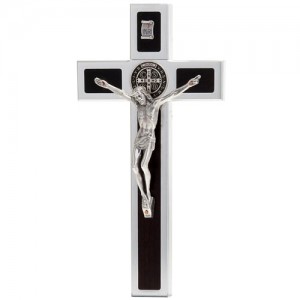
Founder of the Benedictine order and considered father of the Western monasticism, he was the initiator of a new way to perceive monastic life. His love for God, his will to live to contemplate and serve Him, resulted at the beginning in a hermit life, but soon enough he created a community of men who shared his same spiritual yearning and brotherly charity. That way he was able to combine monastic traditions and Eastern hermitage with the Latin world values, which were endangered due to barbaric invasions and the decline of the Roman Empire. Following his example and his Rule, many centers for prayer and many centers of culture and assistance to the poor were built. In those places, there was solitary and community prayer, to which they associated work for the sake of the community, with joy and reciprocal service. The solitude of hermits turned into a communion of men, with their intents, their strength, their faith, which set an example of great strength and effect for all humankind of that time and the following centuries.
Saints Cyril and Methodius
Cyril and Methodius were two brothers born in Thessalonica at the beginning of the IX century. The Patriarch of Constantinople sent them on a missionary expedition to evangelize the people of Pannonia and Moravia, translating the Sacred Scriptures in Glagolitic, a dialect they devised to make them understandable for Slavic people. That way they gave the possibility to all the people they tried to evangelize to understand and make the Word of God their own. Their mission and sacrifice generated a bridge between East and West, which grew stronger with time.
Saint Dominic (1170-1221)
Saint Dominic of Guzmán was a Spanish priest, founder of the Order of Preachers. His life was dedicated to prayer, study, charity and poverty, he gave away all of his belongings, included his books, which he really loved since he was a knowledgeable person, in order to help poor people starving. His apostolic zeal and his spirit of sacrifice showed especially in his fight against Cathar and Valdese heresies. He converted many heretics.
Francis of Assisi (1181 or 1182-1226)
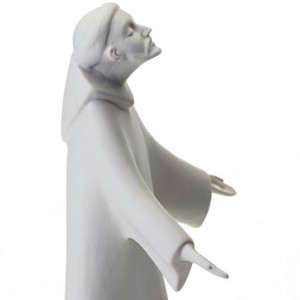
Saint Francis of Assisi was able to predict the evolution of Church throughout the centuries with unbelievable foresight and clarity of mind; he also predicted the spread of the evangelic message, the faith that goes through a path of a rather small world, at the time, but of which he could perceive the greatness and variety. His love for Jesus and for the Church led him to give up everything he had, dedicating his own life to prayer, work and preaching. Consecrated to poverty, he wished for a return to that for the whole Church, following Christ’s example; that made him unpopular to some of his contemporaries on one side, but makes us understand the exceptional modernity of his thought and vision on the other side. In this dimension of poverty and sacrifice, he wanted to follow Jesus’ steps, who he could recognize in every suffering and needy brother. His message of love and fraternity arrived to us with amazing intensity and vividness. We owe him the foundation of mendicant orders, united by the vow of poverty and collection of donations as only form of sustenance.
Clare of Assisi (1193-1253)
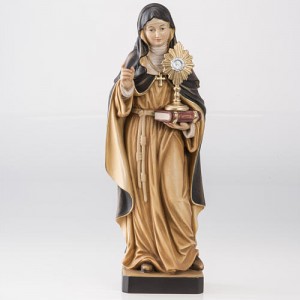
Disciple of Francis, she followed his example and gave up a wealthy and happy life to sacrifice herself in the name of a model of poverty and service for the sick and needy. Her belief in that sense was so strong, that despite the many attempts to take her back to a more appropriate lifestyle for a young woman, she obtained the privilegium paupertatis from the Pope, that is, the faculty to choose not to own any property. Based on this self-induced imposition, Clare wrote her Rule, and became the first woman to accomplish such thing. Her Rule was granted to her women companions, but not to nuns that came after them; anyway, it represents a remarkable precedent that had a great social ad philosophical effect.
Hildegard of Bingen (1098-1179)
Another woman that was a major figure in the medieval spirituality was Hildegard of Bingen, mystic and theologian, wise and extremely knowledgeable woman. She transcribed her many visions, at first just notes, but then turned into books. Her work was not limited to become instrument of the Holy Spirit, “trumpet of God”, as she used to define herself. She left many texts about theology, philosophy, moral, hagiography, science, medicine and cosmology. She was also a delicate poetess and a musician gifted with great sensitivity. Most of all, many personalities of that time, even politicians, turned to her to ask for advice, and Hildegard kept a constant epistolary exchange with some of them. A woman with great appeal and charisma, who left an indelible imprint in the evolution of the Church and the knowledge, but also in the history of her time.
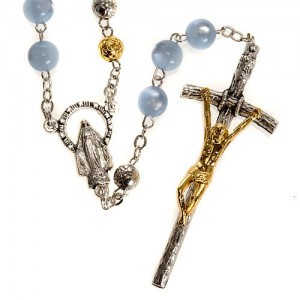
Saint Bridget of Sweden (1303-1373)
Saint Bridget, Swedish religious and mystic, was the founder of the Order of the Most Holy Savior. She is considered one of the Patrons of Europe along with Saint Cathe
Saint Bridget, Swedish religious and mystic, was the founder of the Order of the Most Holy Savior. She is considered one of the Patrons of Europe along with Saint Catherine of Siena and Saint Teresa Benedicta of the Cross. Mystic and spokesperson of God, dedicated to asceticism and contemplation, she received many revelations from Jesus, Mary and some saints. She told about these revelations to her spiritual fathers. They were often about historical events, contemporary or future, and that gave her much popularity. Saint Bridget condemned political and religious authorities through her revelations, fervently promoting a return to a more Christian life. Her preaching to bring the papacy back to Rome from Avignone, her attempt to reform the Church and bring it back to a greater integrity and morality make her a modern figure with great strength and importance.
Saint Catherine of Siena (1347-1380)
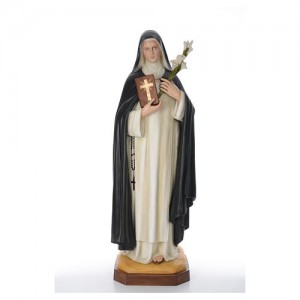
Religious, theologian, philosopher and mystic, Saint Catherine split her existence between the service towards poor and sick people, which according to her was the real mediation to find God, and the activity of wise woman, which resulted in a constant epistolary exchange with the Pope and other powerful figures of the time, in the writing of Orations and of the “The Dialogue of Divine Providence”, one of the masterpieces of medieval mystic literature. This was even more amazing considering the fact that she had no education at all. She dedicated her life to asceticism since she was young; when she was twenty, she received a vision where Jesus gave her the mystic wedding ring. Attentive to what was happening next to her and the historical events that were upsetting the world, she found the salvation for all Christians and all men in the Church and in the Papacy. Her letters of comfort, suggestions and exhortation addressed to sovereigns, leaders and intellectuals had an unbelievable effect on many events and controversies.
Saint Joan of Arc (1412-1431)
Joan had a fundamental role in the Hundred Years’ war, and in general, in the deep political crisis caused by the Western Schism and the conflicts between France and England.
She presented herself as the paladin of her land, sent by God, and led the French army in battle. She was betrayed by her own king and left into the enemy’s hands, and then burned at the stake as a heretic. Her example arrived to us testifies that the love for your own country can be compared to a Christian value; you must always fight for the truth and not for power; fighting is the extreme remedy to solve disputes and put an end to controversies.
Saint Teresa of Avila (1515-1582)
Spanish mystic and religious woman, she was one of the main characters of the Catholic reformation, to which she gave a great contribution with her writings. She was also founder of the monks and friar of the Discalced Carmelites, who chose to dedicate their whole lives to prayer, or even better, to turn life itself into a prayer.
She was the first woman to be recognized as Doctor of the Church, and contributed to the renovation of the Church itself by offering a new model of charity and interpretation of the Gospel, and choosing a religious life made of austerity and joy, strictness, solitude, in a deep union between mystic and apostolic life. Her look was always attentive and focused on the Church needs, and so she preached to her sisters.
Saint Catherine of Genoa (1447-1510)
She belonged to a noble and influential family in Genoa, and left everything after a religious crisis, dedicating her whole existence to Christ crucified as the highest manifestation of the love of God. She continued her life as mystic and religious with her husband, and is remembered for her mercy towards poor and sick people. She lived the experience of the Love of God with complete courage and abnegation through charity and mercy works for humble, unhappy, outcast and plagued people.
Saint Angela Merici (1474-1540)
Founder of the Company of Saint Ursula, known as Ursulines, first secular congregation of women born in the Church, she dedicated her work to giving the possibility to those women who dind’t want or could not get married, but didn’t even want to join a monastery. She created the consecrated virgins, who lived outside the protection of the convent, in a family or a home, but staying faithful to Christ, leading a life oof penistence and working to support themselves.
Saint Camillus de Lellis (1550-1614)
Founder of the Camillians, Order of Clerks Regular Ministers of the Infirm, dedicated to the care of the sick. After having lived a lascivious and aimless life, he met San Filippo Neri and received the vocation to care for the sick after a ling stay at the Hospital for Incurable cases in Rome. Saint Camillus dedicated the rest of his life to cure and take care of sick people. His borther and he lived according to the vows od poverty, chastity and obedience, to which the added a fourth vow, “to serve the sick, even with danger to one’s own life”. Teir motto was: body before soul, body for soul, one and the other for God. The symbol of the red cross they wore on their garments became later the symbol of care and assistance to neighbors.
Saint Vincent de Paul (1581-1660)
French presbyter, he founded many religious congregations dedicated to works of charity and mercy, such as the Congregation of the Mission (“Lazaristes”), the “Ladies of Charity and the “Daughters of Charity”.
He identified the vision of a poor Chrit into poor people, into the last, and dedicated his life and mission to give them dignity and hope back, and the chance to lift themselves up again from their conditions and be able to work again.
Besides working for the poor, Saint Vincent dedicated his own existence to the evangelization of rural areas. In both cases he talked to people in a simple, clear language so that they could understand, and was always ready to listen to their other needs. Another goal he had was the education of priests that could be able to fulfill both their roles of Gospel ambassadors and real and practical support to those in need.
Saint Alphonsus Liguori (1696-1787)
Saint Alphonsus was bishop and founder of the Congregation of the Most Holy Redeemer. He was a man of intellect and study, and pursued the forensic career with brilliant results before he converted and dedicated his life to the church. He wrote literary and theological works, and he also composed melodies that became famous, such as the Christmas song Tu scendi dalle stelle (From starry skies descending). He was a theologian, very attentive to morals, but also aware of men’s limits; he was close to the cause of the humbles, of those who was abandoned by everyone. Besides the charity works, he also educated priests and catechists, and spreading the need to nourish the Church and renovating it from the basics, in order to bring it back closer to Christ and subdued to the Father’s will with his simple and concrete language.
Saint John Bosco (1815-1888)
Religious man and pedagogist, Don Bosco dedicated his life to the education and care for the youth, especially the most needy, by intervening on them while they were still young to turn them into aware and devoted adults. To educate them, he used sense, religion, affection where, until then, strictness and authority had been the only pedagogic instruments considered valid. An education based on love, on respect, on joy and on a life model to show to young people. He was considered a “social saint“, and was founder of the Salesian and the Daughters of Mary Help of Christians congregations.
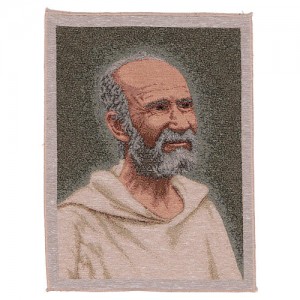
Charles De Foucauld (1858-1916)
After a reckless life and after having traveled to Morocco as an explorer, Charles de Foucauld discovered his vocation. His message and mission became since then the universal love, a concept of fraternity and charity embracing all populations. He considered himself as “everyone’s brother”, and as such he lived, offering mercy and spreading a message of love and tolerance among the nomads of the desert, and anywhere his evangelization travels would take him.
Saint Thérèse of Lisieux (1873-1897)
Also known as Saint Thérèse of the Child Jesus, Thérèse Françoise Marie Martin was a Carmelite nun and mystic. Patron of missionaries and of France, she was the creator of the “Little way”. Thérèse proposed the pursuit of sanctity through small daily gestures made in the love of God. Her abnegation and her complete abandonment to the Father’s will were her way to be close to Jesus. Her instrumets, besides prayer, faith and silence, and deprivations, which will lead her to sickness and death, were also solidarity and charity towards the neighbors.
Edith Stein, Saint Teresa Benedicta of the Cross (1891-1942)
Patron of Europe with Saint Catherine of Siena, Bridget of Sweden, Benedict of Norcia and Cyril and Methodius, Edith Stein was a religious and also philosopher, disciple of Husserl and a feminist ahead of her time. She had Jewish origins, and was theologian and mystic; as nun, she dedicated her own life to MAry. Her martyrdom in Auschwitz made her a emblematic figure, symbol of en era of horrors, but also of deep spiritual and philosophical changes, of which she was protagonist and supporter.

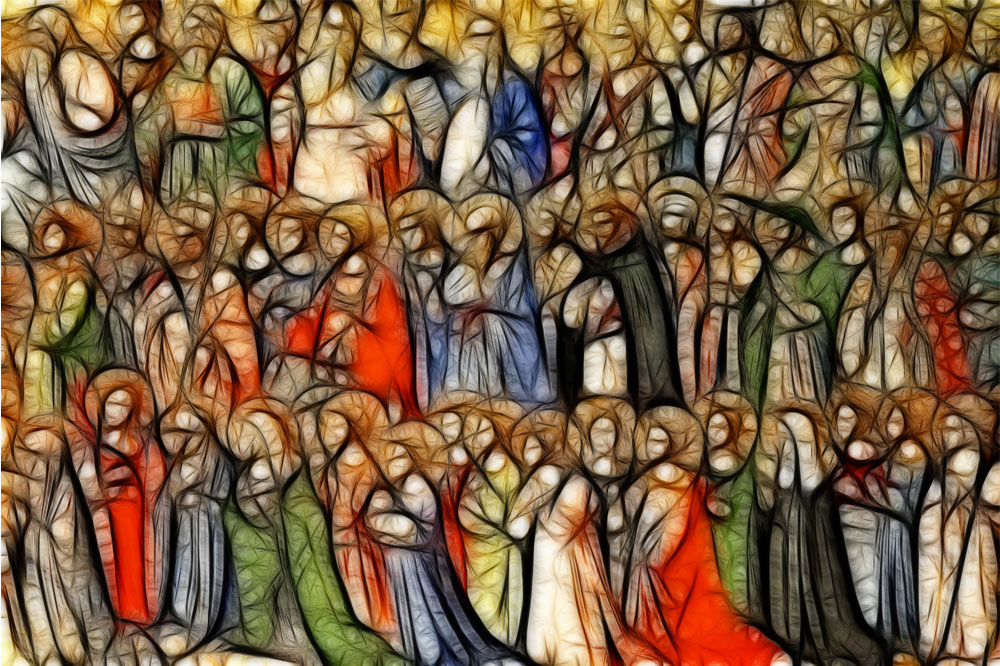

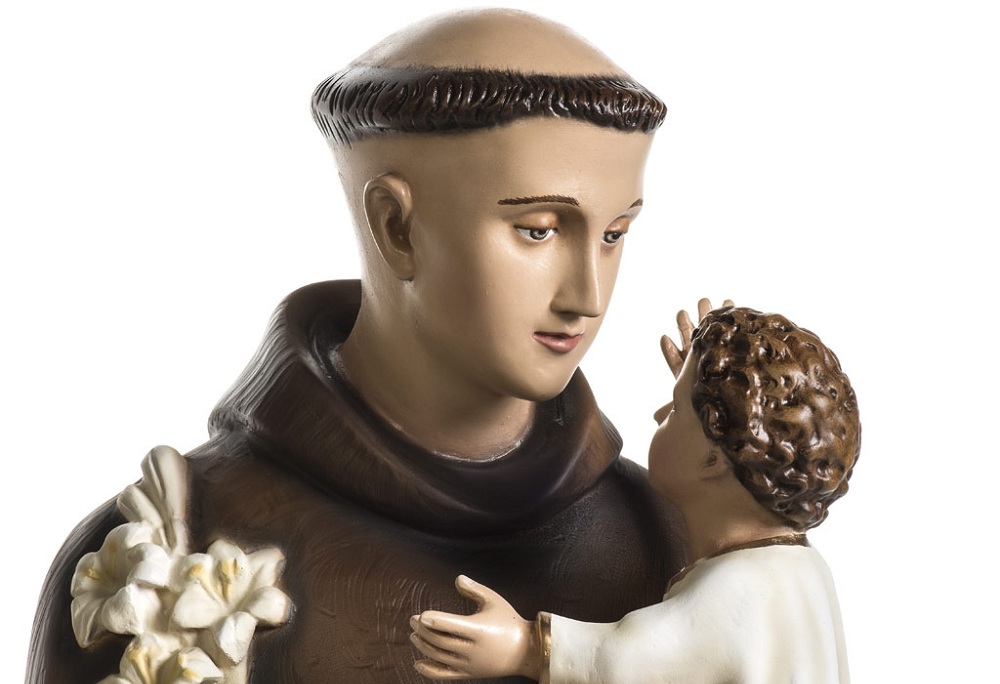

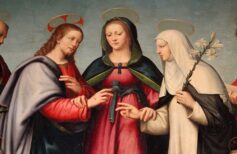

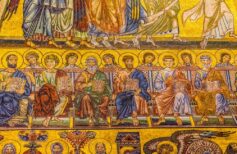
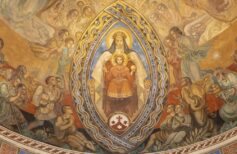
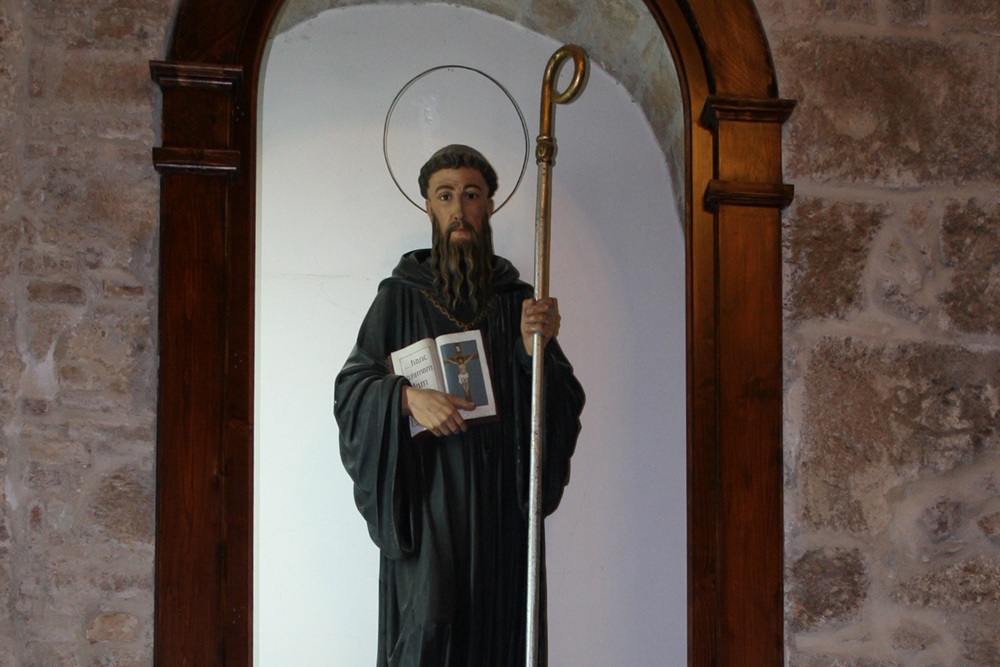









 19 March 2025
19 March 2025






